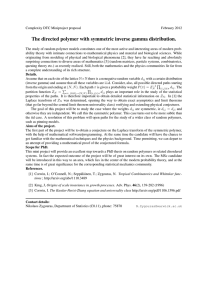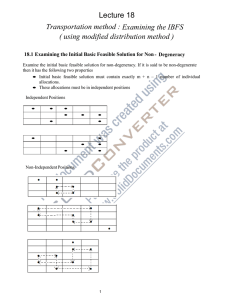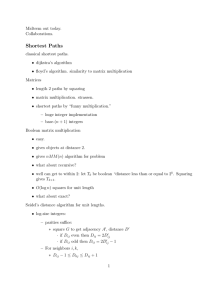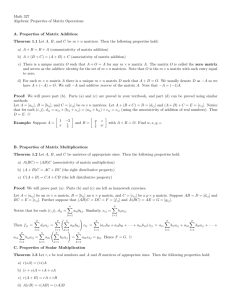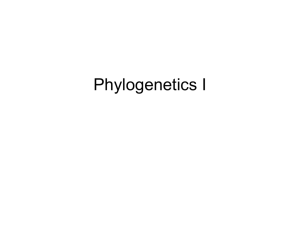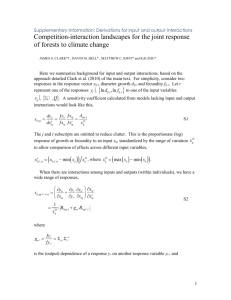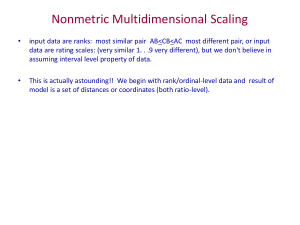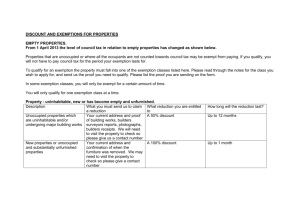Transportation Problem: Moving towards Optimality
advertisement
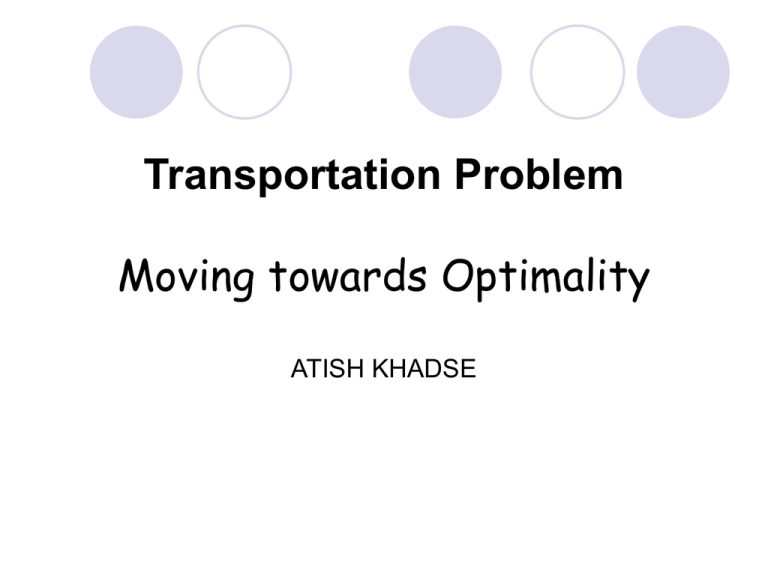
Transportation Problem Moving towards Optimality ATISH KHADSE Once an initial solution is obtained, the next step is to check its optimality. An optimal solution is one where there is no other set of transportation routes (allocations) that will further reduce the total transportation cost. Thus, we have to evaluate each un-occupied cell in the transportation table in terms of an opportunity of reducing total transportation cost. If we have a B.F.S. consisting of (m+ n–1) independent positive allocations and a set of arbitrary number ui and vj (i=1,2,...m; j=1,2,...n) such that cij = ui+vj for all occupied cells (i, j) then the evaluation dij corresponding to each empty cell (i, j) is given by : dij = cij – (ui+ vj) This evaluation is also called the opportunity cost for unoccupied cells. Modified Distribution (MODI) or u-v Method Step 1: Start with B.F.S. consisting of (m+ n–1) allocations in independent positions. Step 2: Determine a set of m+n numbers ui (i=1,2,....m) and vj (j=1,2,...n) for all the rows and columns such that for each occupied cell (i,j), the following condition is satisfied : cij = ui+vj Step 3: Calculate cell evaluations (opportunity cost) dij for each empty cell (i,j) by using the formula : dij = cij – ( ui+vj ) for all i & j. Step 4: Examine the matrix of cell evaluation dij for negative entries and conclude that (i) If all dij > 0 , then solution is optimal and unique. (ii)If at least one dij = 0 , then solution is optimal and alternate solution also exists. (iii)If at least one dij < 0 ,then solution is not optimal and an improved solution can be obtained. In this case, the un-occupied cell with the largest negative value of dij is considered for the new transportation schedule. Step 5: Construct a closed path (loop) for the unoccupied cell having largest negative opportunity cost. Mark a (+) sign in this cell and move along the rows (or columns) to find an occupied cell. Mark a (-) sign in this cell and find out another occupied cell. Repeat the process and mark the occupied cells with (+) and (-) signs alternatively. Close the path back to the selected unoccupied cell. Step 6: Select the smallest quantity amongst the cells marked with (-) sign. Allocate this value to the unoccupied cell of the loop and add and subtract it in the occupied cells as per their signs. Thus an improved solution is obtained by calculating the total transportation cost by this method. Step 7: Test the revised solution further for optimality. The procedure terminates when all dij ≥ 0 , for unoccupied cells.
